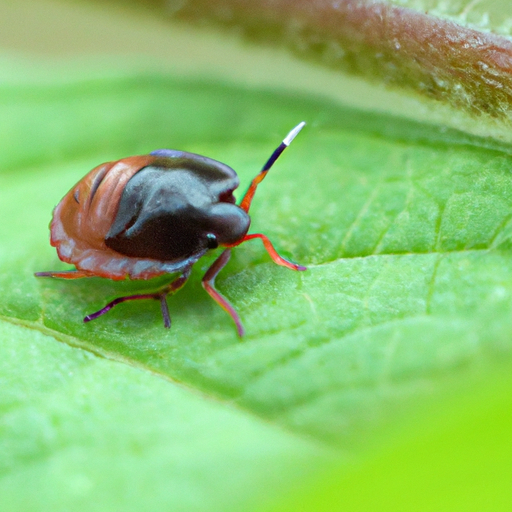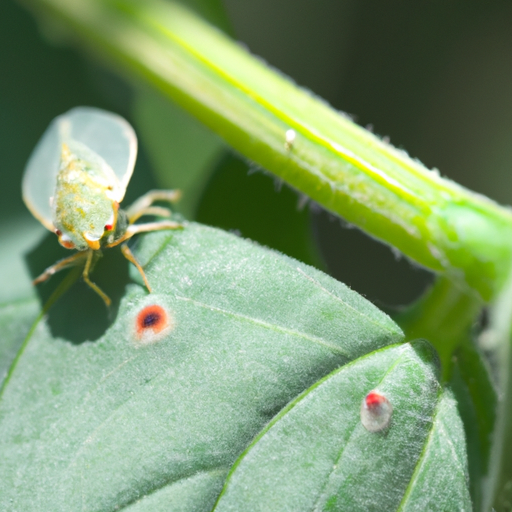
The History and Impact of Phylloxera on Vineyards
Phylloxera, a tiny aphid-like insect, has had a profound impact on vineyards throughout history. This destructive pest, native to North America, has caused widespread devastation in vineyards across the world. Understanding the history and impact of phylloxera is crucial for vineyard owners and wine enthusiasts alike.
The history of phylloxera dates back to the mid-19th century when it was first discovered in North America. It is believed to have been brought to Europe unintentionally, most likely on imported American vine cuttings. The European vineyards, which had no natural defenses against this invasive pest, were quickly overwhelmed. The spread of phylloxera was rapid, and by the late 19th century, vineyards in France, Italy, and other European countries were in crisis.
The impact of phylloxera on vineyards was devastating. The insect attacks the roots of grapevines, feeding on the sap and causing the vines to wither and die. This led to a significant decline in grape production and, consequently, a decline in wine production. Vineyard owners faced financial ruin as their crops were destroyed, and many were forced to abandon their vineyards altogether.
Efforts to combat phylloxera were met with limited success initially. Various methods, such as flooding vineyards or using chemical pesticides, were attempted, but none proved to be effective in eradicating the pest entirely. It wasn’t until the discovery of grafting techniques that vineyards were able to recover from the devastation caused by phylloxera.
Grafting involves attaching the roots of European grapevines, which are susceptible to phylloxera, to the resistant American rootstock. This technique allowed vineyards to continue growing European grape varieties while protecting them from phylloxera. Grafting became the standard practice in vineyards worldwide, and it remains an essential tool in phylloxera management to this day.
Despite the success of grafting, phylloxera continues to pose a threat to vineyards. The insect has adapted to various control measures, and new strains have emerged that are resistant to previously effective treatments. This ongoing battle against phylloxera requires constant vigilance and research to develop new strategies for its management.
The impact of phylloxera on vineyards extends beyond the immediate economic losses. It has also had a profound influence on the wine industry as a whole. The destruction caused by phylloxera led to a decline in traditional wine regions and the emergence of new ones. Vineyards in regions unaffected by phylloxera, such as California and Australia, experienced a boom as they became the new centers of wine production.
Phylloxera also prompted significant changes in viticulture practices. Vineyard owners had to replant their vineyards with resistant rootstock, resulting in the loss of many old and cherished grape varieties. This led to a shift towards more uniform and commercially viable grape varieties, as well as the adoption of modern vineyard management techniques.
In conclusion, the history and impact of phylloxera on vineyards are significant and far-reaching. This destructive pest has caused widespread devastation, leading to financial ruin for vineyard owners and a decline in wine production. The discovery of grafting techniques provided a solution, but the ongoing battle against phylloxera continues. Understanding the history and impact of phylloxera is crucial for vineyard owners and wine enthusiasts to navigate the challenges posed by this persistent pest.
Understanding the Life Cycle and Behavior of Phylloxera

Phylloxera, a tiny insect that feeds on the roots of grapevines, has been a major threat to vineyards around the world for centuries. Understanding the life cycle and behavior of this pest is crucial for vineyard owners and wine producers in order to effectively manage and control its spread. In this section, we will provide a comprehensive handbook on Phylloxera, focusing on its life cycle and behavior.
Phylloxera has a complex life cycle that involves both sexual and asexual reproduction. It starts with the egg stage, where female Phylloxera lay their eggs on the roots of grapevines. These eggs hatch into nymphs, which then feed on the roots, causing damage to the plant. The nymphs go through several molts before reaching adulthood.
Once the nymphs reach adulthood, they can reproduce asexually, giving rise to a new generation of Phylloxera. This asexual reproduction allows Phylloxera populations to rapidly increase in numbers, making them a formidable threat to vineyards. However, under certain conditions, Phylloxera can also reproduce sexually, producing eggs that can survive the winter and hatch in the spring.
Phylloxera has a unique feeding behavior that further contributes to its destructive nature. The insect inserts its mouthparts into the roots of grapevines and injects saliva, which contains enzymes that break down plant tissues. This feeding activity disrupts the flow of water and nutrients within the plant, leading to stunted growth, wilting, and eventually the death of the vine.
Phylloxera is also known for its ability to adapt to different environmental conditions. It can survive in a wide range of soil types and climates, making it difficult to eradicate once it infests a vineyard. Additionally, Phylloxera has developed resistance to certain chemical pesticides, further complicating control efforts.
Understanding the behavior of Phylloxera is essential for implementing effective management strategies. One approach is the use of resistant rootstocks, which are grapevine varieties that have been bred to be resistant to Phylloxera. By grafting the desired grape variety onto a resistant rootstock, vineyard owners can protect their vines from Phylloxera infestation.
Another strategy is the use of cultural practices, such as proper vineyard sanitation and the removal of infected plants. These practices help reduce the spread of Phylloxera and limit its impact on vineyards. Additionally, the use of chemical pesticides can be effective in controlling Phylloxera populations, although care must be taken to minimize the impact on the environment and human health.
In conclusion, understanding the life cycle and behavior of Phylloxera is crucial for vineyard owners and wine producers. This tiny insect poses a significant threat to grapevines, and its ability to adapt and reproduce rapidly makes it difficult to control. By implementing effective management strategies, such as the use of resistant rootstocks and cultural practices, vineyard owners can protect their vines from Phylloxera infestation and ensure the health and productivity of their vineyards.
Effective Strategies for Preventing and Managing Phylloxera Infestations
Phylloxera, a tiny insect that feeds on the roots of grapevines, has been a persistent threat to vineyards around the world. This pest, native to North America, was inadvertently introduced to Europe in the late 19th century, causing widespread devastation to vineyards and leading to the loss of countless grapevines. Since then, vineyard owners and researchers have been working tirelessly to develop effective strategies for preventing and managing phylloxera infestations.
One of the most important strategies for preventing phylloxera infestations is the use of resistant rootstocks. Certain grapevine species, such as American grapevines, have developed a natural resistance to phylloxera. By grafting European grapevine varieties onto these resistant rootstocks, vineyard owners can create a barrier that prevents the insects from attacking the vines. This technique has proven to be highly effective in many regions, allowing vineyards to continue producing high-quality grapes without the threat of phylloxera.
In addition to using resistant rootstocks, vineyard owners can also employ cultural practices to reduce the risk of phylloxera infestations. One such practice is the use of cover crops. By planting certain types of grasses or legumes between the rows of grapevines, vineyard owners can create a physical barrier that prevents the insects from reaching the roots. These cover crops also help to improve soil health and reduce erosion, making them a valuable tool in the fight against phylloxera.
Another cultural practice that can be effective in managing phylloxera infestations is the use of proper irrigation techniques. Phylloxera thrives in moist soil conditions, so by carefully managing irrigation, vineyard owners can create an environment that is less favorable for the insects. This can be achieved by using drip irrigation systems that deliver water directly to the roots, minimizing the amount of moisture in the soil surface where phylloxera are most active.
In addition to preventative measures, there are also several strategies for managing phylloxera infestations once they occur. One such strategy is the use of chemical treatments. Insecticides can be applied to the soil to kill phylloxera and prevent further damage to the grapevines. However, it is important to note that chemical treatments should be used judiciously and in accordance with local regulations to minimize their impact on the environment and human health.
Another management strategy is the use of biological control agents. Certain predatory insects, such as ladybugs and lacewings, feed on phylloxera and can help to reduce their populations. Introducing these beneficial insects into the vineyard can be an effective and environmentally friendly way to manage phylloxera infestations. However, it is important to carefully consider the potential impact on other beneficial insects and the overall ecosystem before implementing this strategy.
In conclusion, preventing and managing phylloxera infestations requires a comprehensive approach that combines both preventative and management strategies. By using resistant rootstocks, implementing cultural practices, and employing chemical treatments or biological control agents when necessary, vineyard owners can effectively protect their grapevines from the devastating effects of phylloxera. It is important for vineyard owners to stay informed about the latest research and best practices in phylloxera management to ensure the long-term health and productivity of their vineyards.






